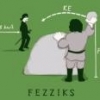Blogs
Our community blogs
-
 Latest Entry
Latest Entry
Circuts
Fezziksphysics discussed VIR charts, referenced physicsgal1's video about circuits and listed the formulas needed to solve Ohm's Law, series, and parallel circuits.
This chapter was difficult at first, but is much easier now that I understand the VIR charts and circuit rules. Once I learned the rules for each type of circuit and learned how to solve mixed circuits, the charts came to me easily. I’m not much of a video person, but I did take the time to watch the video and I found it had a good basic explanation/review of circuits. I tend to learn better through practice problems and note-taking.
One of the most difficult topics was solving mixed circuits. This trick is to remember to combine the parallel circuits into a single resistor, then solve the circuit as a series. Here are the VIR equations:
Parallel:
V1=V2=V3=VT
IT=∑I
RT=(R1-1+R2-1+R3-1)
Series:
VT=∑V
I1=I2=I3=IT
RT=∑R
This website explains circuts pretty well for those people (like me) who learn well through reading:
-

 Latest Entry
Latest Entry
Physics in Movies (Skyfall)
 On March 1, 2014, user Ben Shelton discussed how physics is used in the James Bond movie Skyfall. Since I have seen this movie and other action movies like it, I found it interesting how heroes such as James Bond defy the laws of physics. Ben Shelton broke down the first scene of Skyfall using the equation vf2 = vi2 + 2ad to prove the inaccuracy of a character's fall. It makes me wonder how physics could be used to analyze other action movies.
On March 1, 2014, user Ben Shelton discussed how physics is used in the James Bond movie Skyfall. Since I have seen this movie and other action movies like it, I found it interesting how heroes such as James Bond defy the laws of physics. Ben Shelton broke down the first scene of Skyfall using the equation vf2 = vi2 + 2ad to prove the inaccuracy of a character's fall. It makes me wonder how physics could be used to analyze other action movies.Here is the link to the original post (warning: it contains spoilers):
-
 Latest Entry
Latest Entry
Current Electricity and VIRP Tables
In honors physics, we are working on the current electricity chapter and have started VIRP tables. At first the tables seemed complicated and confusing, but after much practice they have become fun math puzzles.
This link was very helpful to understanding VIRP tables. It was clear and straightforward:
http://www.physicsclassroom.com/class/circuits/Lesson-4/Combination-Circuits
-
 Latest Entry
Latest Entry
First blog assignment: reference to gymnastics
Sandrae312 on 2-10-14 blogged about the different ways gymnasts use work and power. I thought this was cool because I am a gymnast and I never thought about the components of physics in gymnastics.
-

 Latest Entry
Latest Entry
[Re:] Circuits
On March 13, 2014,physicsgal1mentioned learning about circuits, Ohm's Law, a few formulas she learned and even referrenced a video regarding circuits.Now that I'm understanding circuits and how to do VIP charts I really enjoy doing them. To me, the process has become almost medative-at least once I get going. I found the video helpful as it reminded me that the electrions technically flow from the negative side to the positive. Part of me wishes I had looked for a video, like the one referrenced, earlier in the course of learning. Another part of me is glad I didn't because I got to learn the process(a little)on my own and I feel like I know the concept better now because I did the work/learning myself.Now maybe this is just my personality and desire to keep everything organized and together but I would not have only three equations in that post. Even if I know/knew all the equations, I'd rather put all of the ones for series (and parallel) down just in case Idoend up forgetting them. Plus, doing so "proves" I know what I'm doing and leaves little room for others to doubt me but that's just how I operate.Ohm's LawV=IRSeriesV=ΣV=V1+V2+V3....I=I1=I2=I3...RT=ΣR=R1+R2+R3...ParallelV=V1=V2=V3....I=I1+I2+I3...RT=(R1-1+R2-1+R3-1)-1or RT=(ΣR-1)-1or 1/RT=[(1/R1)+(1/R2)+(1/R3)]-1 -
 Latest Entry
Latest Entry
Reflection on Physics Class (third quarter)
Physics class is so interesting and attention grabbing to me. I enjoy physics class but only when I can totally understand what we're doing and what's going on. Right now we're working on circuits and electricity which I find really easy and fun. I like putting together circuits and seeing if they work or not. I like series circuits more than parallel circuits because it's easier to fill out the V IRP table than it is to fill out the table for a parallel circuit. Physics has been going fairly OK for me so far during the third quarter. I really tremendously appreciate the fact that Mr.Fullerton let us students make up the videos we'd missed over these past couple of weeks because I was behind on them but I'm all caught up now. I plan on doing really well on our next "celebration of learning" this week so that my grade can go up even higher. I plan on seeking extra help as well so that I can do my total best on each and every exam we have from now on, including the final exam

- Read more...
-
- 0 comments
-

- 8
entries - 1
comment - 5207
views
Recent Entries
 Latest Entry
Latest Entry
physics of gymnastics
The gymnast on the balance beam does work and power to jump on the beam and do cart weels. The rhythmic dancer's ribbons go through centripetal force. The force is center seeking which causes the constant change in direction. When the gymnast jumps to the rings he does work and power too.
- Read more...
-
- 0 comments
- 8
-

- 42
entries - 47
comments - 12973
views
Recent Entries
 Latest Entry
Latest Entry
Physics of Surviving E&M
So, I am aware that you guys have been doing E&M for a while, so while this is a little late, it should still help. Now, I know that not everyone likes E&M (just ask Mr. Fullerton how much I liked it
 ). Well, I too am taking E&M (for the third time), and I have finally cracked the code for success (took me long enough). Now I, the girl who cannot do the right-hand rule (still), is not only understanding E&M, but solving it CORRECTLY.
). Well, I too am taking E&M (for the third time), and I have finally cracked the code for success (took me long enough). Now I, the girl who cannot do the right-hand rule (still), is not only understanding E&M, but solving it CORRECTLY.How you ask? Well, here are some tips:
1. Don't read the book. Seriously. People who say they read the book and found it helpful either a) didn't read the book b ) are lying or c) is Mr. Fullerton. Instead, DO THE PRACTICE PROBLEMS. The book has some really good example problems that are similar to the ones you do in class, but different enough for practice, and then you have the step by step answers. Plus, some of the examples are actually the derivations for electric fields, and trust me, it's a good idea to do those again.
2. Ask questions. Think you understand what you did in class? Think again. Very few people that I know understood E&M perfectly the first time. Mr. Fullerton doesn't bite, so ask him questions. (The worst that he will do is throw you out a window
 )
)3. Actually do the homework. I mean do the homework on your own, not do the homework with the answer right in front of you so you can glance at it for every step or copy someone else's procedure and plug in your numbers. You may think, Oh, I'm not going to do that. I will only look at the answer key when I need to. I know. I was you. But I stopped doing that because I realized that I was looking at the answers too frequently for it to be MY work. Now I'm not saying don't use the answers. I love answer keys (just ask Mr. Muz). But don't become so dependent on them that you can't solve the problem on your own.
4. Ask for help. The most important of them all. If you need help, you are not going to learn anything by ignoring it, hoping it goes away. In E&M, your worst nightmares never just "go away". They linger in the background and attack when you least expect it, causing you to have a mini breakdown. I know. I've been there. Two days ago. But then I went to my professors office hours and it turned out I knew more than I thought. Shocker, I know.
These things have helped me to survive E&M (barely). And if I can survive, so can you.
PS: Since I am taking E&M this semester, I will post helpful tips, problems, derivations, equation dumps, anything that I think might help you, the new Physics C students, to survive... As long as I have time. I do have my own homework.

- 42
-

- 15
entries - 12
comments - 9336
views
Recent Entries
 Latest Entry
Latest Entry
Music and waves and parties
Music is cool. speaking of music, listen to this for some ambiance.
Why is music so cool though?
Because waves.
A wave is pretty much the movement of energy. If thats so, than what is sound?
Sound is a type of wave caused by a vibration.
In the case of music an instrument, or ones own vocal chords, can produce vibrations which then travel through the air as waves eventually reaching your eardrum.
- Read more...
-
- 0 comments
- 15
-

- 10
entries - 1
comment - 4736
views
Recent Entries
Latest Entry
pogo sticks
at one point in everyone's lives they have tried to use a pogo stick (some more successful then others).
for starters there is elastic potential energy stored in the spring. which is the work that is done stretching, in this case compressing, the spring. you can find out just how much energy is stored through using the equation PEs= 1/2kx^2. where k stands for the spring constant or the stiffness of the spring and x stands for the displacement from equilibrium. (the difference from the original spring and how long/ short it is after you stretch/compress it. also the more you stretch or compress the spring the greater the fore of the spring. in this case it means that the more you compress the spring the higher off the ground the pogo stick will go. have fun pogoing.
- Read more...
-
- 0 comments
- 10
-

- 6
entries - 2
comments - 2554
views
Recent Entries
 Latest Entry
Latest Entry
physics in riding a dolphin
One of my dreams in life is to ride a dolphin at somewhere like seaworld or somewhere in Florida. But, how much power does a dolphin have? Power is really easy to calculate. But first you need to calculate the work done by the dolphin using the equation W=Fd. The force would be the weight of the dolphin multiplied by gravity (9.81m/s^2) and the distance would be exactly that, how far the dolphin would be swimming. Once you have calculated that, you can use the in the power equation which is P=W/t. The t being the time it took from the dolphin to get from it's initial point to its end point. This would be how much power the dolphin has alone. What if you wanted to calculate the power the dolphin had with you on it's back? Then you would add your weight plus the dolphins weight and then multiply it by gravity and use the equation for work to find out the work done. And then plug that into the power equation again. And then you would know how much power you and a dolphin would have together.
- Read more...
-
- 0 comments
- 6
-

- 9
entries - 0
comments - 3397
views
Recent Entries
Latest Entry
Physics in Catching
There are tons of physics in catching a pass, rather that pass being from the real sports football basketball or maybe a sport like baseball. A lot of the physics actually comes from the pass. For example tracking where the trajectory of the ball is being place along with the force that was put on the ball in order to make it move sense we know if a force wasn’t put on it then it would never be moving in the first place. The acceleration of the ball basically right when it reaches your hand must reach 0m/s2 or the force of the ball will end up having you not showcase your ability to catch the ball. Typically when you are about to catch something you bend your hands in a glove like shape, this is because the greater the area of a place for the ball to land the less the force of the pass.
- Read more...
-
- 0 comments
- 9
-

- 6
entries - 0
comments - 3804
views
Recent Entries
Latest Entry
universal Gravitation
We all know that gravity is the reason for things falling but nobody really knows why. We do know how to find and calculate gravity which helps us understand it better. Newtons law of universal gravitation helps to understand a little more of how gravity works. It states that any two things with mass have a gravitational force between them. The more mass and the closer they are means the more gravity they have. So all of us are pulling on everything with mass all the time but our masses are so small compared to the mass of the earth that it does not have an effect. The Law of Universal Gravitation does not just apply to objects on earth but the entire universe thats why its called universal. Using this law we can discover the gravitational force on any planet that we know the mass of before we even go there.
- Read more...
-
- 0 comments
- 6
-

- 9
entries - 4
comments - 5788
views
Recent Entries
 Latest Entry
Latest Entry
Physics of trampolines
Everyone loves to jump on trampolines. They are just so much fun! But do you ever think about the physics behind the fun activity? The physics involved in jumping on a trampoline is elastic potential energy. There is elastic potential energy because there are springs all around the trampoline. Elastic potential energy is equal to one-half times the spring constant times the amount of compression squared. To find the spring constant or the amount of compression, you must know the other and the force of the spring and plug it into the spring force equation which is Fs=kx. Once you know both k and x, you can find the amount of energy stored in the springs by plugging them into the elastic potential energy equation. Now you can figure out how much energy is stored in a trampoline before you jump on it!
- Read more...
-
- 0 comments
- 9
-
 Latest Entry
Latest Entry
Calculus
 This blog post is going to be slightly different than other posts. Most have to do with activities that people do but for this blog post, I wanted to connect physics not with an activity that I, or someone I know, do but with a class I take. More likely than I would like to admit, taking physics has allowed me to better understand my AP calc class. We frequently do problems that have to do with finding the speed/velocity of an object, then the acceleration, or the derivative of the speed/velocity, However, occasionally in calculus, we are giving the problem, but not an equation to plug the problem into. Thanks to physics, I have been able to know how to tackle a calc problem because of what I have learned in physics. I know that a=v/t and v=d/t and typically, enough of those values are given to me so that I can finish the problem. Also, we have learned about Newton's method in calc, which was just crazy weird because as we were discuss Newton's laws in physics, the same guy's method popped up the class right before. So while most people can find the physics in their sport of choosing, I can say that I have seen physics reappear in my Calculus homework.
This blog post is going to be slightly different than other posts. Most have to do with activities that people do but for this blog post, I wanted to connect physics not with an activity that I, or someone I know, do but with a class I take. More likely than I would like to admit, taking physics has allowed me to better understand my AP calc class. We frequently do problems that have to do with finding the speed/velocity of an object, then the acceleration, or the derivative of the speed/velocity, However, occasionally in calculus, we are giving the problem, but not an equation to plug the problem into. Thanks to physics, I have been able to know how to tackle a calc problem because of what I have learned in physics. I know that a=v/t and v=d/t and typically, enough of those values are given to me so that I can finish the problem. Also, we have learned about Newton's method in calc, which was just crazy weird because as we were discuss Newton's laws in physics, the same guy's method popped up the class right before. So while most people can find the physics in their sport of choosing, I can say that I have seen physics reappear in my Calculus homework.
- Read more...
-
- 0 comments
-
 Latest Entry
Latest Entry
The Physics of Driving
Physics is involved in our everyday lives, whether we like it or not. One of the things that we do on a daily basis is drive- there's lots of physics in driving! Ever think about why the gas/break petals push back up after you step on them? That's because when you push on the breaks, the break petal pushes back onto you. To get more in depth, Newton's 3rd law applies to driving because when you drive, the action force is pushing against the road and the reaction of the road is pushing against the tires. Also when a car hits a person (let's hope this doesn't happen), the person hits the car. To sum this all up, when you put energy and force into an object, energy and force comes back to you.
- Read more...
-
- 0 comments
-

- 5
entries - 1
comment - 2952
views
Recent Entries
Latest Entry
Action and Reaction pt.2
Last time I talked about Netwon's 3rd Law, and how it is similar to offense in basektball. I said that "Newton believed that every action had an equal and opposite reaction, meaning that all forces come in pairs. If object 1 exerts a force on object 2, then object 2 must exert a force back on object 1 which is equal in magnitude and opposite in direction." To be good at defense in Basketball, it would be great to follow a similar concept. On defense your goal when matched up to a player on 1 on 1 defense your goal is to shut down 1 player and make sure they can not make an impact on the game. You want your defensive assignment to score as little as possible or better, not at all. Follow your player like a shadow. whatever he does, you follow that, so if he drives to the basket left, backpedal, and try to stay in front of him. direct him with your defense. If your playing a little bit off of him, stand between him and the ball, this is called being in hte gap, if you play it correctly, you should always be aware of the ball and the man. You are vulnerable to a back cut, if you dont watch your man carefully. If you correctly know where the ball and your man is, you are always in a good position to steal the ball off a pass. The 3rd Law idea also helps hear, as you have to shadow the offensive player your gaurding, mirror his movemnts so you can always stay in the gap, and you can always be in the position to steal the ball. Your goal should be to never let your assignment even touch the ball. No scorer can score without the ball, and that is something to remeber. >>>>>>>>>>>>>>>>>>>>>
<<<<<<<<<<<<<<<<<<<<< In this clip, Kobe cuts, and recieves the ball for an easy two points, the defender didn't have a good enough position to either stop Kobe, or steal the ball, and this is exactly what you do not want to happen as a defensive player.
- Read more...
-
- 0 comments
- 5
-

- 5
entries - 2
comments - 3086
views
Recent Entries
Latest Entry
Physics in Bowling
There is a lot of physics involved in the game of bowling. Potential energy is one component of physics that is involved in bowling. Depending on the height from where the bowler releases the ball, the ball has some potential energy. Bowlers who bowl straight balls have to make sure that the ball stays as close to the lane as possible upon release because, if the bowler bowls a straight ball the potential energy will not affect the game a lot but it will draw attention to the bowler when they drop the ball very high for others to laugh at.
Bowlers who bowl with a hook ball are more at risk than straight ball bowlers. The more potential energy the ball has upon release, the longer it will bounce as it travels down the lane. This makes the ball less likely to catch friction in the lane.
- Read more...
-
- 0 comments
- 5
-

- 7
entries - 3
comments - 3682
views
Recent Entries
Latest Entry
physics of football
Football seems pretty stupid to me. Athletes line up across from eachother, then run at eachother as fast as they can. However, football is my favorite sport to watch. There is alot of large forces coliding in football. Every colision can be related back to physics. The force of anything is determind by its mass and acceleration. The larger the mass of an athlete and the more acceleration an athelete has the larger the force the athlete can produce. NFL players can produce large forces on eachother. This leads to big hits and head injuries.
- Read more...
-
- 0 comments
- 7
-

- 6
entries - 5
comments - 3353
views
Recent Entries
Latest Entry
Horse Jumping
Most horses have four gaits that they commonly use. The first, the walk, is a slow, tame, four beat gait. The trot, slightly faster, is a two beat gait. The canter, a three beat gait, has a rocking feel to it. Last but not least is the gallop, which is a fast four beat gait, averaging about 25 mph.
The most comfortable gait for a horse to jump from is the canter. This is a consistent gait that allows the horse enough momentum as well as an even pacing so that an adequate amount of force can be used during the takeoff.
My trainer has told me that there are five components to a jump, all important in making sure that you complete it safely and well, gracefully.
The first is the approach. Approaching the jump means that you must prepare at the correct angle, make sure you have enough room to count out the proper stride length, and give yourself time to think about whether you need the horse to go a little faster (a small nudge with your calves), or slower (a half-halt, pulling slightly with both reins and then releasing), in order to glide into phase two safely.
Phase two is the actual jump itself. When jumping, the horse exerts a force on the ground in order to push itself upwards. This can be represented by Newton's second law or F=ma. Horses can carry up to 30% of their body weight. While this is impressive, it is also a limit. When the horse exerts all of that force on the ground, the ground exerts the same force back. This can seriously damage their back legs if the rider is not careful.
Phase three of the jump is the air time. While the horse is in the air, it is the rider's job to not only sit up, releasing the pressure on their back, but make sure that their landing will be comfortable and set them up correctly to continue the course. During their time in the air, the horse has only potential energy, compared to it's kinetic energy during the approach. At the horse's maximum height, the velocity is zero, meaning the only force acting upon horse and rider is gravity: 9.81 m/s^2.
Phase four is probably the most dangerous phase of the jump, not only because there is a large force between the horse's front legs and the ground, but also due to the fact that all of the rider's weight is put onto the horse's front legs as well, causing a large strain. Again, if the rider does not properly care for the horse, all of this weight and force could potentially damage it's legs.
Phase five, or finale, is after the jump is completed. The velocity of the horse should return to that of the velocity during the approach, meaning the sum of the forces during the entire jump should be equal to zero. The rider should check to make sure the horse is on the correct lead, and proceed to evaluate their next jump, repeating step 1.
- 6
-

- 6
entries - 6
comments - 4687
views
Recent Entries
Latest Entry
rochester driving weather
it is obvious that our winters are not like those in miami. We can have some very harsh weather and it is important to be prepared when driving from place to place in the ice and snow. To be safe, car maufacrures must consider the elements of friction. This is why many cars have for wheel drive: for better traction on the ice. A car going down the road would qualify as kinetic friction and since the ice has little friction so the nature of the ice must be balanced. Another way to prevent accidents on an icy road would be by putting salt on the road to change the nature of the ice and create a greater frictional force.
- 6
-

- 10
entries - 11
comments - 5457
views
Recent Entries
Latest Entry
Physics, Physics, or Physics?
Originally this post was going to be written as a play and emulate shakespeare but it's so hard to use blank verse and iambic pentameter when words like acceleration take up half the steps per line, It's as if physics wasn't designed to be performed by a theater troupe I mean seriously Newton? Where's your artistry bruh bruh? Needless to say my original plan failed rather colossally so I'm just gonna present the gist of what the play would have been and break down the physics behind it. The curtains open to a library where leibniz and newton are having a heated debate over the credit for that whole weird calculus thing. Keep in mind it's a library so all of this happens with a minimal volume. The argument escalates rather violently and the two draw up arms. While they fight they literally shout-whisper out the physics and calculus of what their doing. Lines like "i strike thee with a great velocity"or "thou shall cease to have energy kinetic nor potential!"
Anyway the play will be funny when i finish it for my blog next quarter. But for now I'll discuss the physic of two calc geniuses beating each other silly. You see each time one hits the other their built up momentum that goes with their punch becomes a major impulse delivering a huge force in minimal time, performing work on things like newton's teeth when their position is rather drastically shifted. When they presumably throw the library books at each other the projectile motion has to be accounted for, the velocity of a book thrown by newton will hit leibniz with a great reduction due to drag forces and the acceleration due to gravity.
- 10
-

- 6
entries - 4
comments - 2835
views
Recent Entries
Latest Entry
How I Broke My Pinky
Everyone knows the blue, padded gym walls. If someone was to offer you 10 dollars to punch one as hard as you could, there are at least 5 of you out there who would take it. Well, had i known the physics of a punch, I wouldn't have ended up with a broken pinky. If you're going to punch a blue wall in the gym, keep this in mind. The longer the punch connects with the wall, the smaller the force was. This makes sense logically,, if i hit something hard my hand will bounce back from the collision. If I just Touch it, the collision is a lot less forceful and far less damaging.
Airbags rely on this fact as well. Newton's first law accounts for inertia, and in a car accident, inertia might throw you through a windshield. Airbags deploy and you fall into them, keeping contact for much longer than you would have if you smashed into the steering wheel. This weakens the blow, and therefore the damage that the force will have
- 6
-

- 4
entries - 1
comment - 3369
views
Recent Entries
Latest Entry
Catapult
Creating a catapult has shown me many things relating to physics. What we have learned in class that relates back to a catapult is projectile motion and projectile angles. When you use a catapult you can find its velocity, distance, acceleration and time. You are able to find its horizontal and verticle projectile. The horizontal velocity will be constant which means the acceleration will be 0 m/s^2. Its verticle component would have an initial velocity of 0 and its final velocity would increase. You can use the kinematic equations to solve for its velocity, distance, acceleration or time. You just have to know three of the five to find the unknown.
- Read more...
-
- 0 comments
- 4
-

- 4
entries - 1
comment - 3947
views
Recent Entries
Latest Entry
Tokyo Drift
Drifting is when a driver oversteers,or the car exceeds its tire's limits of adhesion, to cause a loss of traction in the rear wheels, when the rear slip angle of a car is greater than the front slip angle. In doing so the front wheels point in the opposite direction of the turn, the car is going left but the wheels are pointed right. Every time we turn a vehicle we resist the change of direction due to Inertia. Simply put, inertia is the amount of resistance to a change in velocity or momentum. Newton's first law of motion connects to this because he said that an object at rest stays at rest or continue with constant velocity unless acted upon by an outside force. So an object will continue as it was unless some external force comes in and messes everything up. Inertia is most often masked by effects of friction and air resistance both decrease speed of moving objects and gravity.The friction between the tires and the road and allow the front wheels to break traction. Turning the steering wheel in the opposite direction, intertia of the car that is trying to slide in the opposite direction is added to the force applied by the engine and the friction of traction between the tires and the road. If the car is front-wheel drive, the rear tires weigh less so they break traction first which causes the rear to slide out. Lifting the throttle makes another weight transfer and enables the rear wheel to weigh even less. Such physics was applied in the movie Fast and Furious: Tokyo Drift. the main character had to master the physics of drifting to beat the antagonist. This called from some amazing racing/drifting scenes. Physics is everywhere whether we acknowledge it or not. But be careful when trying to drift - no saying that you should try, honestly I can't stop you- if the center of gravity is too high you will roll over instead of sliding.
Drifting scene from Fast and Furious: Tokyo Drift :
Learn to drift:
- Read more...
-
- 0 comments
- 4
-
Recently Browsing 0 members
- No registered users viewing this page.




